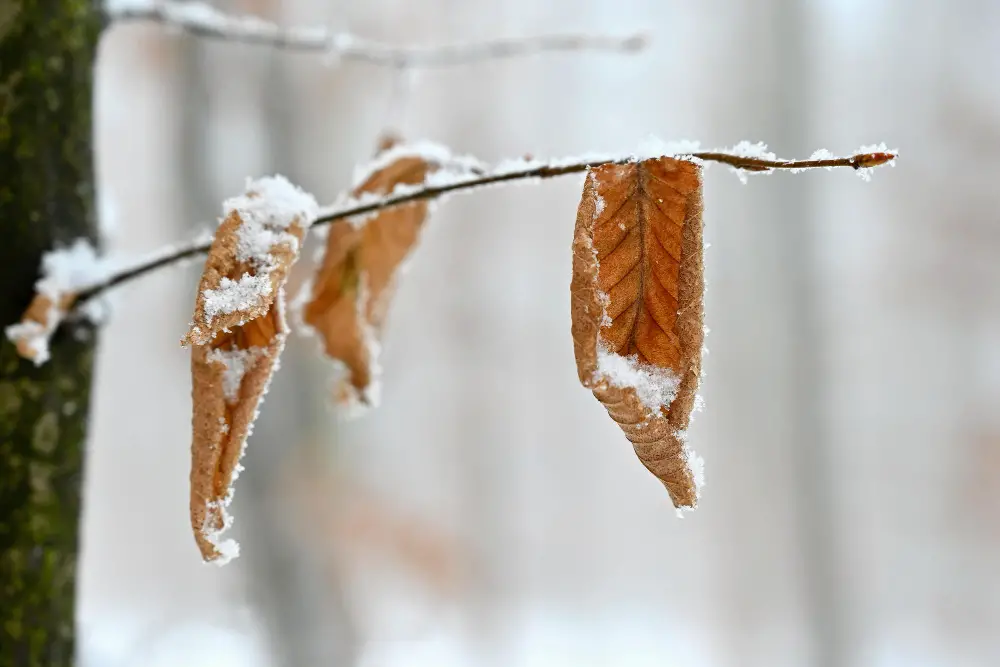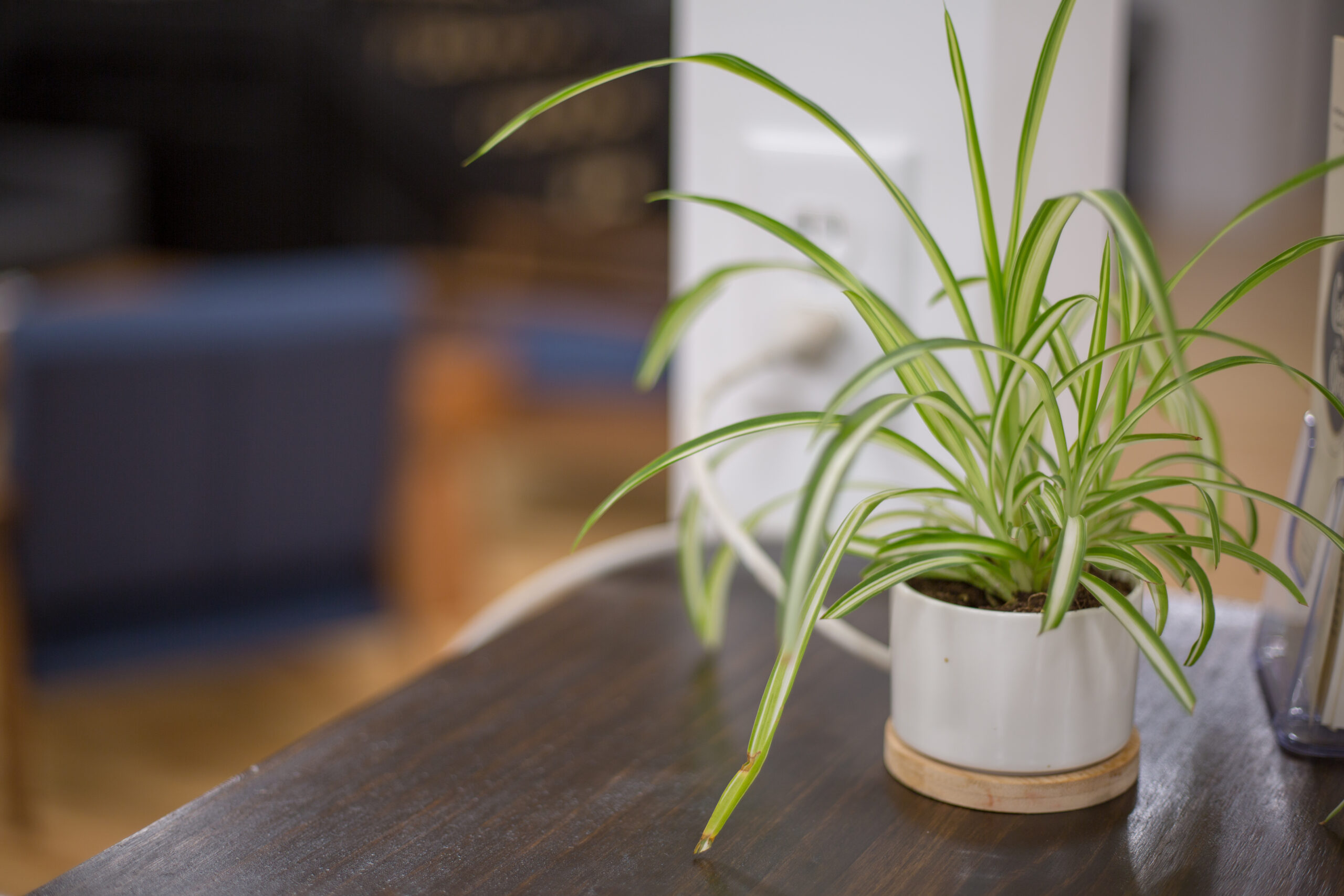“How do you revive a dying spider plant?” is probably a question you’ve never uttered aloud, but you still need an answer. After some research and personal experience, this is my best advice for reviving a dying spider plant.
Table of Contents
How Do You Revive A Dying Spider Plant?
To revive your dying spider plant, it is essential to water properly, allowing the top two inches of soil to dry out between waterings, maintain the appropriate temperature for development, place your spider plant in bright indirect light, and mimic some of the circumstances found in its natural habitat.
The root rot that occurs as a result of overwatering is typically the cause of a spider plant’s death. This condition causes the plant to wilt and turn yellow, giving it the impression of passing away. Spider plants are susceptible to dying when over fertilized, inadequately watered, or kept in an environment with low humidity, all of which induce browning at the leaf tips.
Continue reading to find out why your spider plant is suffering and dying and what you can do about it.
Read more: Why is my Spider Plant drooping?
Spider Plant Leaves with Brown Tips
- Symptoms: The leaves of your spider plant turn brown, usually with brown tips that look dry.
- Very low humidity, not enough watering, too much watering, too much wind or air flow from drafts or air conditioning, too much fertilizer, sunburn, cold weather, and fluoride in the water are all things that can cause this.
Spider plants are indigenous to South Africa, which has a warm, tropical climate with a high average humidity and average annual rainfall. This environment allows the plants to thrive.
In the event that you fail to recreate these circumstances when caring for spider plants, the ends of the leaves may become brown, and the plant may appear to be withering overall…
Read more: Why Are My Spider Plant Leaves Folding?
Spider Plants with Brown Leaf Tips Due to Drought Stress
If you under-water your spider plant, you may notice that the tips of its leaves begin to turn brown. This is a sign that the plant is experiencing drought stress, which can be caused by a lack of humidity, low humidity, or air currents that draw moisture away from the leaves faster than the roots can absorb it.
Spider plants are able to withstand a certain amount of dryness because they store water in the thick fleshy roots and rhizomes of their plant, but if the soil has entirely dried up, the tips of the plant will become brown.
Spider plants thrive in tropical parts of Africa, so the low humidity in your house is counterintuitive to their original habitat. It can also create stress, resulting in dark leaf tips from dryness.
Air currents in our apartments caused by air conditioning, forced air, draughts, or convention air currents from sources of heat can also aggravate water loss from the foliage and be the reason of brown leaf tips. These air currents can be caused by air conditioning, forced air, draughts, or convention air currents.
How to Revive Spider Plants with Brown Leaves Due to Drought Stress

- Create a humid microclimate around your spider plant by misting the leaves with water and spraying the plant from a distance. This aids in recreating the settings of greater humidity that are found in the tropical range of the spider plant and minimizes the amount of water that is lost through the leaves. You should mist your plants at least once per week, but you should do it twice per week if you reside in an environment that has a particularly dry climate.
- Increase the frequency with which you water your spider plant. Spider plants are able to withstand a certain amount of dryness, but after the soil has entirely dried up, the leaves may turn brown. The optimum time to water spider plants is when the top two inches of soil feel somewhat damp to moderately dry rather than when the soil has fully dried out. This is the best time to water spider plants. Watering spider plants once every 7-10 days is usually sufficient, but this might vary depending on weather and conditions, so always verify how long it takes for the top two inches of soil to appear fairly dry before establishing an acceptable watering program for your house.
- Give your spider plant a thorough bath. If you water too lightly, you will only be able to moisten the top inch or two of the soil. The moisture will not be able to penetrate the soil and reach the roots, which will cause the tips of the leaves to turn brown due to the plant’s response to the stress of dryness. Always water with a thorough soak so that surplus water can escape via the drainage holes. This will guarantee that the soil is evenly moist and that the roots will be able to take in the necessary amount of moisture. Place your spider plant in an area of the room that does not experience major drafts, and Keep it away from areas that have a direct flow of air conditioning or forced air. Excessive air movement dries out the leaves. A more humid atmosphere is preferred by spider plants.
If drought stress is the source of the spider plant’s brown leaf tips, the plant should recover after a few watering cycles in the coming weeks.
If the drought stress was severe, it is frequently required to clip the brown edges of the leaves. This is because the tips do not necessarily revert to their green or variegated color after the browning process.
If you want to encourage additional growth and improve the plant’s appearance overall, all you have to do is take a pair of clean pruners and snip off the tips of the leaves.
Read more: Why Are My Spider Plants Leaves Curling?
Fluoride in tap water causes brown leaf tips.
Spider plants are extremely susceptible to pollutants found in drinking water, such as fluoride and chlorine. In response to being exposed to fluoride, the tips of the foliage might become brown and perhaps fall off completely.
Instead of using tap water to irrigate your spider plants, it is recommended that you use filtered water or rainwater instead. This will prevent any potentially dangerous chemicals from building up in the soil.
Because the tips of the brown leaves do not regenerate due to fluoride or chemical sensitivity, just clip off the ends of the leaves with a sterile pair of pruners and avoid watering with tap water to improve the appearance of your spider plant.
Spider plants experience quite rapid growth during the spring and summer months and should be able to fully recover.
Read more: Should I Cut Bent Spider Plant Leaves?
Excess Fertilizer Causes Spider Plant leaf Tips to to Brown
Even while spider plants are not usually heavy feeders, they do benefit from having their soil fertilized in the spring and summer.
If fertilizer is given too frequently, in too high a concentration, or during the winter months when the plant is developing slowly (and hence has a lesser requirement for nutrients), the leaf tips turn brown and crispy, indicating stress.
In order to maintain their optimal state of health, spider plants normally need to be fertilized with a balanced, general houseplant fertilizer at half strength once per month from the beginning of spring to the middle of summer.
An excess of fertilizer leads to the accumulation of salts in the soil, which makes it harder for the roots to take in moisture from the surrounding environment.
Remove the spider plant from its container and remove the surrounding dirt to revive spider plants with dark leaf tips caused by too much fertilizer.
Repot your spider plant in fresh potting soil, as the previous one has amassed an excessive amount of salt over time and has to be replaced.
After you have replanted your plant, give it a thorough soaking to help reduce any stress caused by the transplanting process and to remove any excess salts that may still be present in the roots.
If the tips of the leaves do not appear to be recovering, you can trim them using sterile shears to encourage new growth.
Read more: Why Is My Spider Plant Pale And Limp?
Temperatures over 80°F and below 55°F cause the leaf tips of spider plants to become brown.

During the day, the temperature should be in the range of 65 degrees Fahrenheit (18 degrees Celsius) to 75 degrees Fahrenheit (23 degrees Celsius), and the temperature should be higher than 55 degrees Fahrenheit (12 degrees Celsius) at night.
When the temperature is much cooler than 55 degrees Fahrenheit for an extended period of time or when the temperature reaches 80 degrees Fahrenheit (27 degrees Celsius), the leaves of the spider plant will exhibit signs of stress by becoming brown and occasionally even black.
Spider plants thrive at room temperature and prefer bright indirect light instead of direct sunlight, which keeps them in the appropriate temperature level for growth.
If your spider plant is now in direct sunlight, you should relocate it to a place with more shade.
Brown tips can also be formed when your spider plant’s leaves come into touch with a chilly window, which can even be frosty in the winter, so make sure the leaves aren’t in contact with windows if you live in a cold environment.
Remove any brown or damaged leaf tips from the plant by cutting them off. This should encourage new growth and allow the plant to recover.
Read more: How Do You Bring A Spider Plant Back To Life?
Too Much Sun Causes Browning of Leaves
Spider plants are adapted to growing in dark areas beneath the shade of a tree canopy, and while they can take some dappled light, they prefer bright indirect light.
If the foliage is subjected to direct sunlight, then this can cause the plant to dry up, which results in brown leaf tips, or it can induce sunburn, which can turn the majority of the leaf brown where it is exposed to the sun. Both of these outcomes result in brown leaf tips.
A spider plant will perish if it is subjected to an excessive amount of sunlight. Thus, it is essential to relocate it to shade as quickly as possible.
You may help your spider plant recover from the effects of drought stress by giving it some water and washing the leaves with a mist. It is possible that the direct sunlight has caused the plant to suffer from some degree of dehydration.
It is vital to clip these individual leaves at the bottom of the plant in order to improve the appearance of the plant. Leaves that have become brown as a result of sunburn do not return to their original green color.
If the majority of the leaves have sunburn, you should only remove a few leaves at a time while pruning the plant to avoid the plant dying of shock.
Sunburn occurs most frequently when the spider plant is transferred from a shaded area to a site with direct sunlight.
Although spider plants are able to withstand some exposure to direct sunlight, moving them rapidly from the shade into the sun increases the likelihood that they may suffer sunburn.
Read more: Why Are My Spider Plant Leaves Creasing?
The Spider Plant Drooping and Turning Yellow
- Symptoms. The spider plant’s leaves are becoming yellow and drooping or withering.
- Reasons. Overwatering, soils that drain slowly or contain an excessive amount of fertilizer, and using huge pots that take a very long time to dry up are all common causes of plant death.
Spider plants are indigenous to the tropical regions of South Africa and have developed unique adaptations that allow them to survive in arid environments. These adaptations include deep roots and rhizomes that may store water as well as nutrients.
When it comes to overwatering and underwatering, spider plants are more vulnerable.
In general, spider plants demand for the top two inches of soil to be allowed to dry out between periods of watering in order to achieve the ideal level of moisture balance.
If you overwater your spider plant or grow it in soil that drains too slowly, the leaves will become yellow and eventually fall off.
It is extremely difficult to salvage a spider plant if it has developed root rot as a result of repeated overwatering. At this point, it is best to attempt to propagate and plantlets that may have produced while the main plant dies back rather than trying to save the spider plant.
When an excessive amount of fertilizer is applied on a regular basis, it can cause the leaves to droop and turn yellow as a symptom of stress. Additionally, the tips of the leaves can frequently turn brown as a reaction to the fertilizer.
In spite of the fact that their roots are confined, spider plants may still flourish and produce flowers even when grown in containers that are on the smaller side.
Larger pots contain higher soil capacity and hence store more moisture, increasing the danger of root rot.
Read more: Should I Cut The Dead Tips Off My Spider Plant?
How to Revive Drooping Spider Plants with Yellow Leaves
If there is too much moisture around the roots of spider plants, the leaves may begin to turn yellow as a symptom of stress. However, the plant will recover if the watering schedule is adjusted so that it receives less water than it did previously.
On the other hand, if the roots of the spider plant have been sitting in wet soil for an extended period of time, then the plant is likely to develop root rot, which can be fatal to the plant.
How to Revive Spider Plants with Root Rot
- If you suspect that overwatering is the source of yellow leaves, remove the spider plant from the soil and examine the roots. Roots that have been affected by root rot become dark and mushy, in contrast to the white appearance of healthy roots. If the roots seem to have root rot, you should trim any diseased-looking roots back to where healthy growth is occurring. (If the roots (If they are completely white in color and do not seem discolored or feel mushy, you may simply reduce the amount of water you give them.)
- Between each cut, wipe the pair of pruners off with a cloth that has been soaked in alcohol disinfectant to avoid the transmission of microorganisms that cause fungal diseases to healthy areas of the roots.
- The leftover soil should be washed away, and the spider plant should be repotted in a new pot using fresh potting soil. Alternatively, the original container may be washed completely with a disinfectant and then reused. This is because the previous soil may house the fungal diseases that cause root rot.
- For the following four weeks, maintain an equal moisture level in the soil and periodically spray the leaves to reduce the effects of transplant shock.
- Make sure that the base of the pot has drainage holes in it so that any excess water can escape, and if you are using saucers or trays underneath the pot to prevent water from leaking into the house, make sure that you empty the saucers or trays on a regular basis so that the soil does not become soggy.
Repotting your spider plant provides it a chance to live, while it is possible that the plant may not recover, particularly if the root rot is severe.
Read more: Why Is My Spider Plant Turning Brown After Repotting?
If you believe that too much fertilizer is causing your yellowing leaves…
- Put an end to the use of fertilizer until the plant has fully recovered. During the active growing seasons of spring and summer, fertilizer should only be administered at a concentration of half strength approximately once per month.
- It is important to provide ample amounts of water to the soil in order to facilitate the dissolution of any surplus salts that may have accumulated as a result of an excessive application of fertilizer. However, you should only water the soil until the top two inches have become completely dry in order to avoid issues that might arise from overwatering.
- After a period of four weeks, you should consider replacing the soil if the spider plant has not begun to show any indications of recovery. It is conceivable that the accumulated salts in the soil (as a result of the fertilizer) are still at a concentration that is too high, and the only way that is likely to be successful in reviving the plant is to repot it with new potting soil.
If the spider plant appears to be recovering but some individual leaves remain yellow, cut the afflicted leaves back to the plant’s base.
Because a change in temperature can cause spider plants to become yellow, which is a symptom of stress, you should make sure the temperature of the spider plant remains between 65 and 75 degrees Fahrenheit (18 and 23 degrees Celsius) to allow the plant to recuperate.
Conclusion
How Do You Revive A Dying Spider Plant?
A dying spider plant is frequently the result of root rot caused by overwatering, which turns the leaves yellow and causes the spider plant to droop and look like it is dying. If there is not enough humidity in the air or too much fertilizer, the leaf tips of the spider plant may become brown and die back.
Drought stress causes leaf tips to become brown owing to insufficient hydration and low humidity. Increase the amount of water you give it and mist its leaves.
Temperatures over 80 °F and below 55 °F cause the spider plant’s leaf tips to turn brown and die. Spiders thrive in temperatures ranging from 65 degrees Fahrenheit (18 degrees Celsius) to 75 degrees Fahrenheit (23 degrees Celsius).
It is possible to revive a spider plant that appears to be perishing by simulating some of the circumstances that existed in the ecosystem in which it originated. Provide the plant with moderate amounts of water, greater levels of humidity, and warm temperatures.
By Kristin Hardwick in Objects
Winter tree photo created by montypeter – www.freepik.com
Woman thinking photo created by wayhomestudio – www.freepik.com



